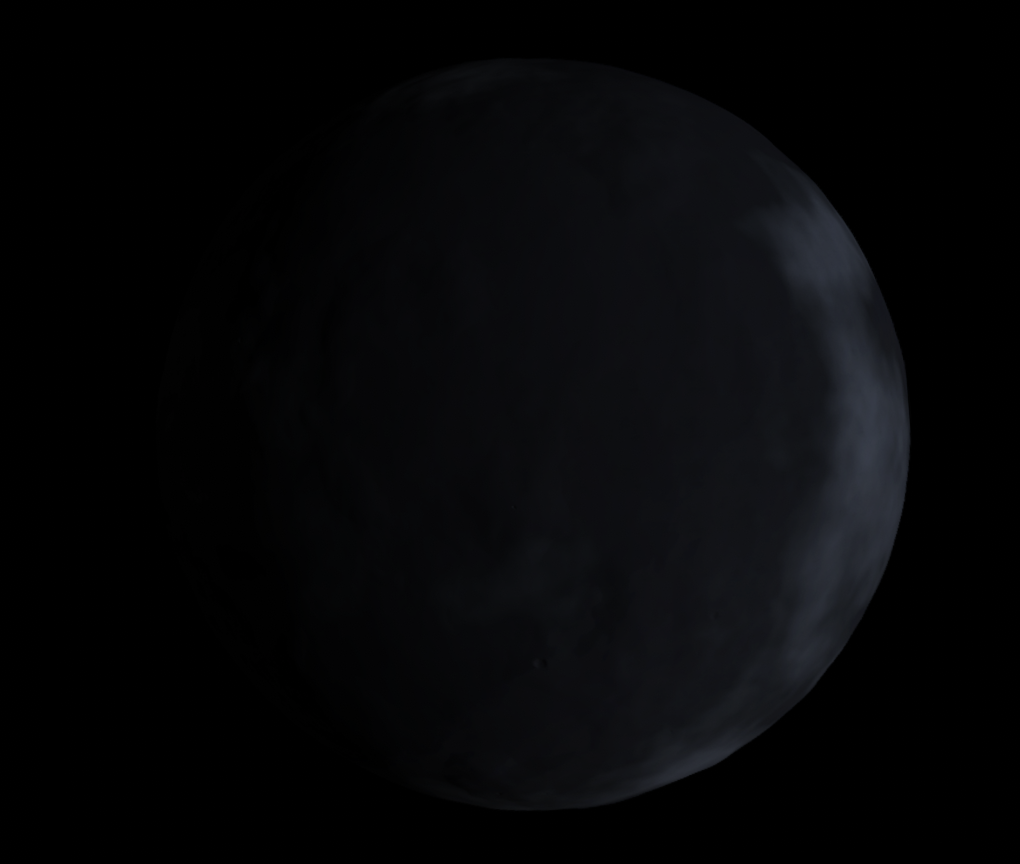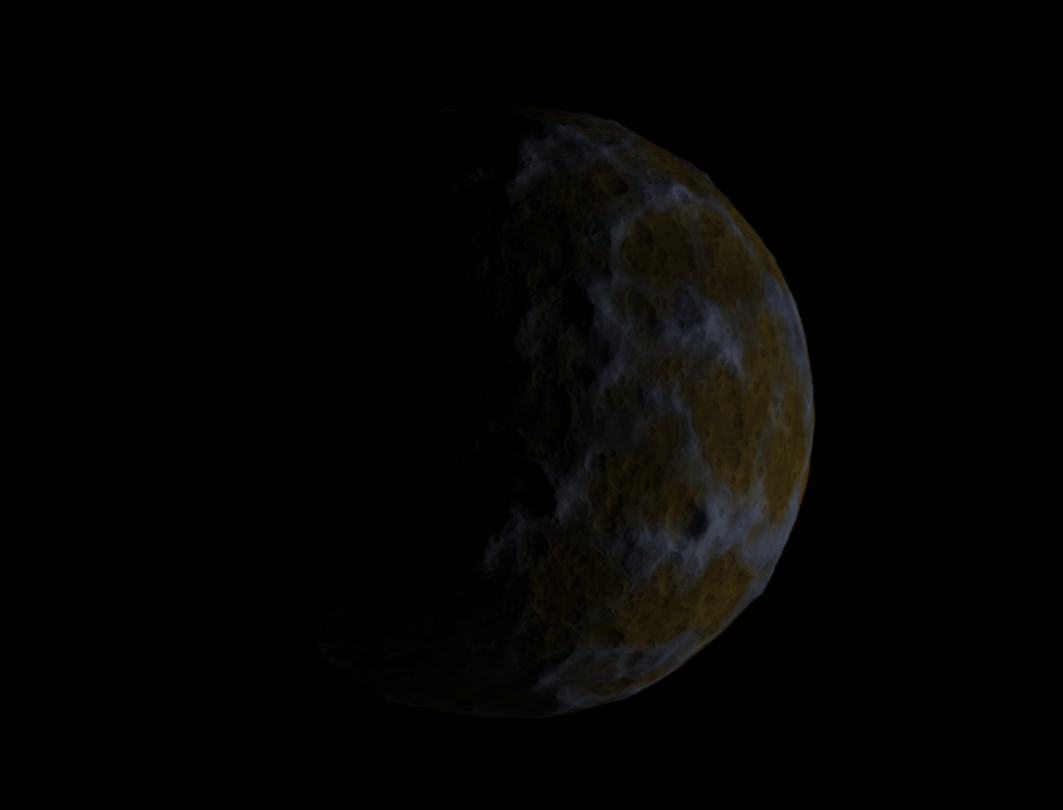The Blast moon system
Table of contents
Ras

Ras as seen from space
Mass |
2.209E22 kg (0.3 times Moon’s) |
|---|---|
Radius |
874 km (0.503 times Moon’s) |
Gravity |
0.196 g |
Rotation period |
Tidally locked |
Semi-Major Axis |
62,106 km (0.161 times Moon’s) |
|---|---|
Inclination |
0° |
Eccentricity |
0 |
Period |
33 h, 54 m, 53 s |
Ras is remarkable for both its high iron content, and its incredible flatness. The highest recorded elevation on Ras is 600 meters tall. Currently, the most popular theory is that Ras is a captured moon, and was originally close enough to Karat during its death to have its surface entirely stripped, leaving only its polished iron core exposed.
`
Row Address Strobe
`
`
Trend continues for three-letter names for innermost moons! This is indeed the flattest rocky body I created for this project. It really is just a ball of iron, with rocky material only slowly accumulating on its surface. I’m actually not sure how realistic this is, I’m just crossing my fingers it works out.
`
Cas

Cas as seen from space
Mass |
7.247E22 kg (0.986 times Moon’s) |
|---|---|
Radius |
1,876.68 km (1.08 times Moon’s) |
Gravity |
0.14 g |
Rotation period |
Tidally locked |
Semi-Major Axis |
141,055 km (0.366 times Moon’s) |
|---|---|
Inclination |
0.05° |
Longitude of Ascending Node |
-9° |
Eccentricity |
0.1 |
Argument of Periapsis |
102° |
Period |
4 d, 19 h, 46 m |
The second moon of Blast is quite similar to Earth’s moon, though with a much different looking surface containing light tholin deposits and a unique structure of hills and mountains snaking across its surface.
`
Column Address Strobe
`
`
CS references are fun! Cas itself is...pretty generic, though. I’m surprised how good it looks considering how little effort I was putting into creating it. So, I don’t think I’ll update it again. Its okay.
`